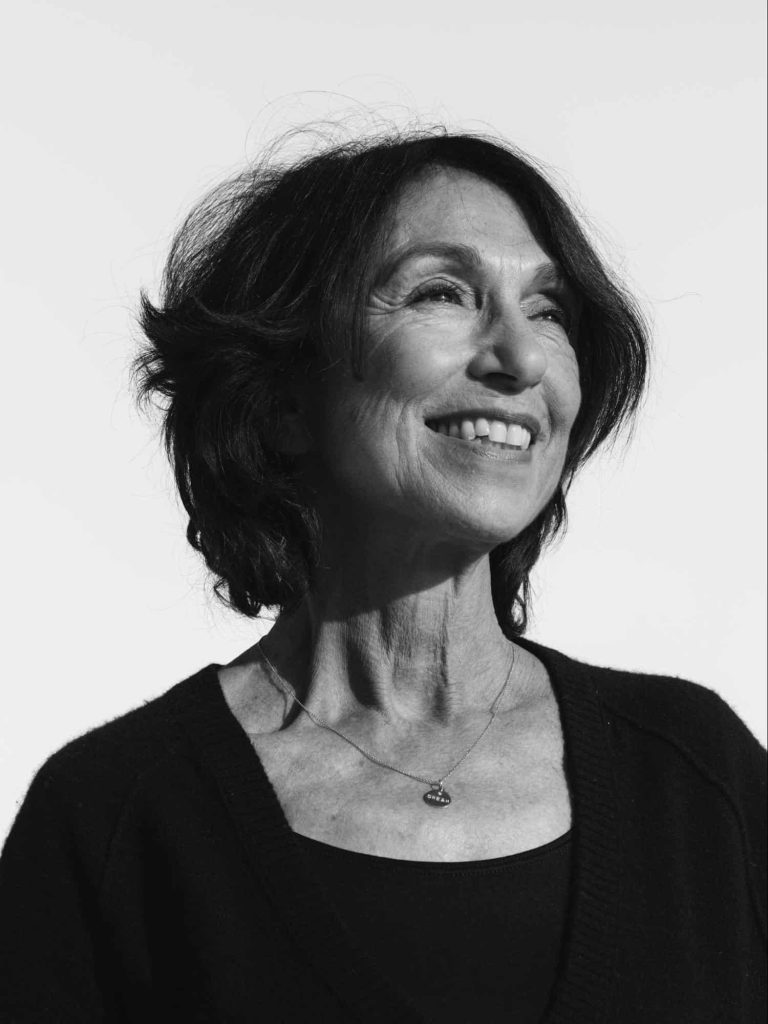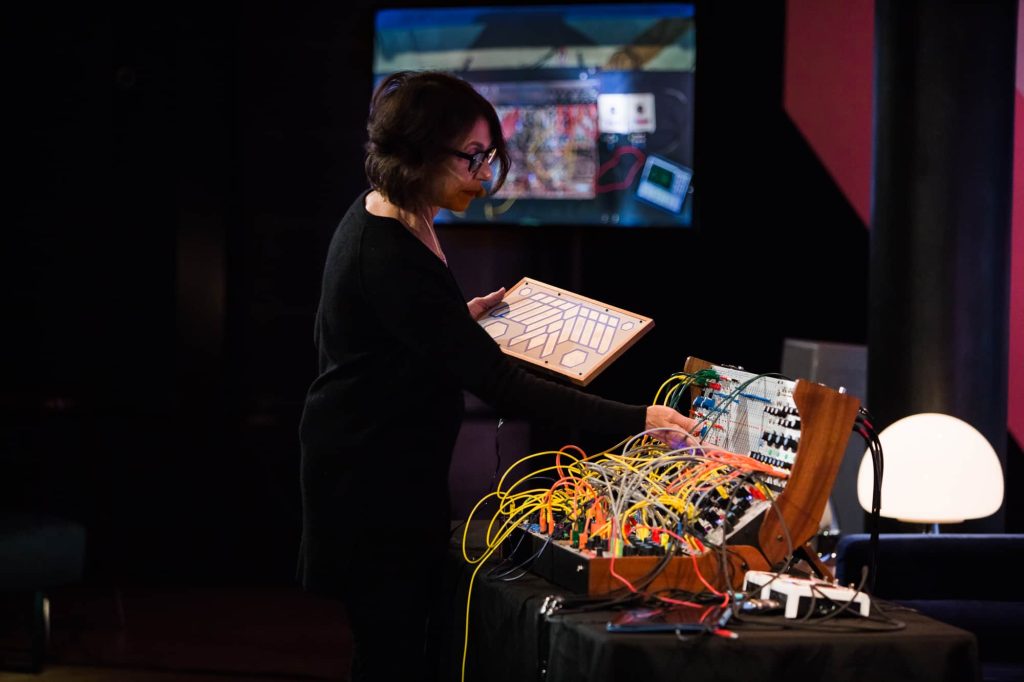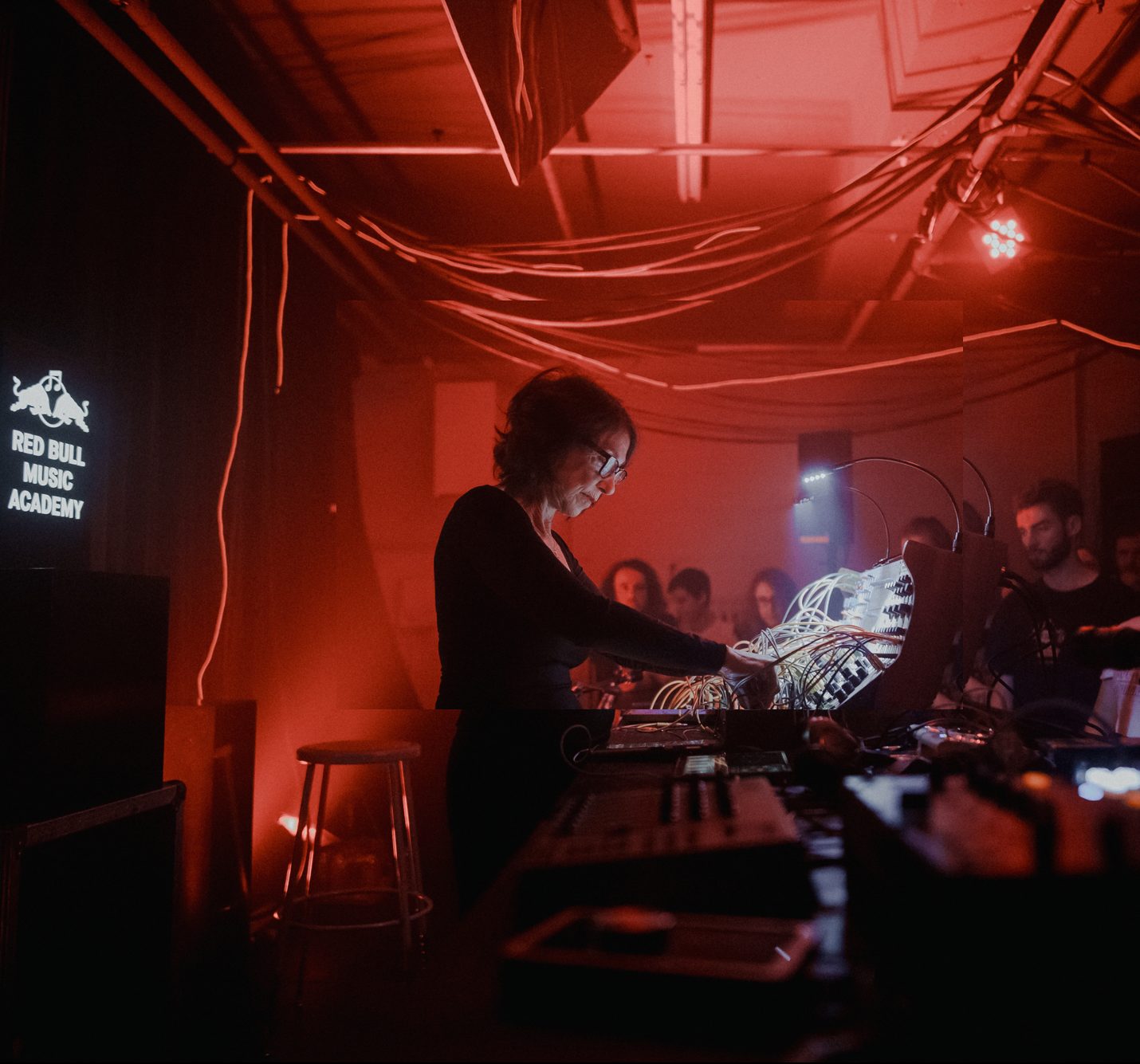We had the chance to speak with audio industry veteran, Suzanne Ciani. Here’s what she had to share on growth and challenges in her field, her speciality on the Buchla, and the experience of producing 3D audio live.
How have you seen the field of synth and spatial audio change overtime?
I'm really glad that there are people like yourselves on the team of surround sound and immersive audio because it needs some support. Definitely. I'm an old timer. So I remember the first round of this interest in the early seventies. There was a fascination with quad and quad LPs; there were two formats, S Q and Q S and it was kind of like in the VHS for which format was going to win. The problem with the whole situation then was that there was really no content. So nobody knew how to design immersive audio in a meaningful way. They didn't know what it was for. Now we have our second chance: we're 50 years later and the interest is renewing and what we need is content. Yet also the apparatus has grown tremendously. We have people dealing with multi-speaker environments with quadraphonic, there are all kinds of iterations of the number of speakers and the spatial dimensions. We just need more content.
You are one of the preeminent masters of the Buchla. For those that aren’t familiar, how would you describe this piece of equipment and its uses?
The Buchla is an analog, modular electronic music instrument that was designed by Don Buchla. And the first one he made was in 1963, I met him in 1969 and went to work for him and became an absolute devotee, a dedicated musician for his instrument. I call Don the Leonardo DaVinci of instrument design. I could go on for days, you know, about the missing link, you know, a real consciousness of the potential of an electronic music composition system. He, from the beginning, had a spatial processing aspect to the sound, essentially electronic music was a monophonic signal and he designed a system that allowed voltage control of the movement of the sound. And not only the movement of the sound, the way it was integrated with the music, with the rhythm of the music, but also he had a voltage-controlled reverb that could move the signal closer or farther away again with voltage control. So we don't have that capability today. We are still exploring the past for good reason because there were a lot of things going on then that for some reason were out of sync with the vision of these, you know, far-seeing designers.
And now we have a chance to bring these things back again. Don Buchla is gone, but his company is still alive. And the instrument that he designed, I play now - or rather an updated version. I do live quadraphonic performances all over the world with the Buchla as my part in creating content, I think it's very important that we have content for the immersive challenge. And this is a very meaningful content because you can actually control the spatial dimension of the sound, integrated with the actual music. It's not applied afterwards. It's not like Atmos where you're taking material and you're reconfiguring it. You're saying, “Now I'm going to move this here.” With the Buchla, the space is actually generated by the music, which is important because it needs to be in time in rhythm.
Can you expand on that?
When you move a sound that is a rhythm, that's creating its own rhythm, it'll be out of sync with a musical beat. For instance, if the motion and the beat are not the same, they are not integrated. So there are issues in getting meaningful content for these spatial systems. But, you know, it's a beautiful thing that we have, people like the folk at Envelop. They're a San Francisco group making open source, spatial software and they work with a plugin with the ever-popular Ableton software. I don't use Ableton, but the beauty of this open-source software is that you can easily dial in the number of speakers that you have. You know, if you have 44, you dial it up to 44. Or you dial it down, and all of the translation is taken care of. That's an enormous advantage in adapting to all the different kinds of surround setups that we have now.

You produce 3D music live. Can you tell us anything about your upcoming project?
It's a live performance and that's all I've been doing for about four or five years now. And the reason I'm doing it is to draw attention to the lost art form that was available to us. There has been a Renaissance, a new wave of interest in analog modular, and a lot of that has to do with the design of the instruments and what's possible because of it. My feeling is that the Buchla is the absolute high-end instrument design, I'm trying to show Don’s design approach so that it can impact the design of current modular, mostly Euro rack designers.
One of the things that I'd like to see implemented most is the spatial control of sound live. Studio is fine, but my commitment really is to the totally alive and joyous interaction of live instruments in a concert space. The sound comes alive because the sound was meant to move; electronic sound coming out of an instrument is not that exciting until it dances in space. And the beauty of course, is that the dancing in the space is controllable. So when you're designing the spatial aspects of any part of the music, you design that movement to compliment the music. If it's an ocean wave, it'll move very slowly in a continuous pattern. If it is an exciting rhythmic passage, it might jump randomly from one corner to another, it might even go in and out, farther away and closer on every beat. It's really dancing in an imaginary space.
You were the first solo female composer to score a Hollywood film, and one of the first ones to start their own company in the industry. What advice and encouragement would you give to underrepresented communities to help them excel in the field?
You know, you have to be stubborn and you have to follow your passion. The nature of technology is that it's always changing. It's not like learning a violin where you can master it. Every day you pick up the violin and it's the same; with technology every day, there's something different. And it's usually a challenge.
I've faced that all the time. I took a vacation from technology for about 10 years. I went back to the piano and it was such a joy, but now I'm back in tech and it's gnarly. An especially difficult thing is the myriad integration of different systems. Even in spatial sound you have people designing speakers, people designing delivery formats, people you have to coordinate with - a lot of different departments.
What we need to develop is, as I said, the way to integrate the musical gestures with the spatial movement. So it means something, it's not just an overlap, you know?
If it's drums, bass, piano, guitar, you don't see acoustic music in general in these formats. I think it's a distraction to move it. You have to design the composition and not all spatial music is moving. Right? It's a wonderful thing that people are designing music for this spatial thing, though. I think that a lot of the home theater systems now have decoders, you know, so if you can encode for them, you can have it decoded on the other end. Everyone should get into making new content for this if they can.
Can you tell us about producing 3D music live, like you did in Suzanne Ciani Quadraphonic Live. What kind of prep did you do before? How did you study the venue? What challenges did you anticipate and how did you overcome them?
I produced quadraphonic LPs. It's easier to do a spatial audio, as you figured out I'm sure, digitally than it is in an LP. When we made the quad LP, we had to include a decoder and the whole package was $227, which is expensive. The people who made the decoder for my project were in Australia, a company called Involve Audio. They are definitely moving in the right direction for facilitating immersive sound. Because of this I just released the album, but it wasn't an LP. It was just purely digital and IAA’s approach is right: the audio files actually need to be downloaded because delivery systems that were used just don't accommodate the large files. I don't like to release in stereo. I've had other people release some of my music in stereo, but now with the new Involve decoder, I can encode my stereo signal on an LP and know that it can be decoded on the other end into quad so I can get the best of both worlds. People can listen in stereo, but I haven't compromised my aim.
I've been playing in quad, you know, my whole life. So this goes back to the seventies where I performed only in quad and had problems because the theaters were not happy about setting up a quadraphonic capability. You know, I was supposed to play at Lincoln Center and they wouldn't put speakers in the back. So, I had so many challenges performing live quad. Now I come back all these years later and everybody is like thrilled with quad and, you know, they caught up. So I'm having a really fun time.
I've played in all kinds of physical spaces, you know, from Lincoln Center to Washington DC, that big theater, to Royal Albert Hall in London, which is an oval shaped theater. I've played to a big crowd of people with the huge powers of quad speakers. I've played in churches with small speakers. The most important thing is that the sound delivery is equal amongst the speakers. You know, some people at the beginning thought, “Oh, the back speakers don't matter as much.” They do. I mean, they have to be equal: equal power, equal everything.
Again, I'm always doing live, so post-production is different. I haven't done any quad albums that weren't live, but I'm not interested. Atmos said, “Why don't you come and remaster your first album and do it in an Atmos design?” I could do that, I think it's a wonderful time to do spatial because people have their 5.1 setups.
We've also noticed, from just what people have been saying about live, the uncertainty around when they can go to concerts again. The time that we're living in, hopefully it's temporary, but it definitely seems like a time where people are going to start investing more in home theater setups, because they're trying to replicate the experience in their home. Well, that's, that's exciting to me because I've been busy trying to set up, you know, a performance capability in my studio. That would be a wonderful thing because I like delivering quad live. And if people can handle that on the other end, then we're all set. I don't need to take another airplane.

You famously invented the Coca Cola pop-and-pour, can you tell us about the process of creating that iconic sound?
It was probably one of the first commercial projects after I got to New York in 1974. I was a hungry artist. I had come there to do a performance on the Buchla in an art gallery. And I fell in love with New York and I stayed there. I got very hungry before long and needed to make a living. And it occurred to me because I couldn't get a record deal playing electronic music to look at advertising as a source of income. I went to the top agencies and I offered them sound design. I said, “I can make sounds that will represent your company or your product in ways that you never imagined before.” And all this came very naturally to me. The Coca Cola Pop and Pour’s story is very important to my life because I tried to get into that agency, which was the largest agency in New York, McCann Erickson for almost two years. And I couldn't get in, I couldn't get an appointment. And finally, I pushed my hand and stumbled upon this moment in the studio where they were looking for something to fill a blank space. My brain was in overdrive as I volunteered to find a way to fill the space. I always say, yes. “Can you do this?” I always say yes. And then I figure out how to do it. I call it the power of requests, when somebody asks you to do something that generates power in your own life and you just say yes, and can figure out how to do it.
I of course wanted them to use that sound a lot. I had a master's degree in music so I knew that if I designed something that didn't have a pitch center like C, E flat, G or whatever, that it could be more generalized and work in more places. So my mercenary mind immediately thought, you know, from the beginning, I want this to work in a lot of different places. I came up with the idea of these bubbles, which do not have a pitch center. You know, they don't have a key and it was perfectly suited for electronic sound because you could take a very low frequency sound and put it into a band pass filter, and you could pick off the harmonics just by putting a control voltage up the center frequency.
So that's what I did. I made the bubble and then we made the fizz. The Buchla to this day has the absolute best white noise, or just any kind of noise that I ever encountered. I use it to make waves in all my concerts and all my albums - waves have become my signature sound. That same white noise is so beautifully, musical and controllable. That was the other part of the Coca Cola sound.
Who are some artists and innovators who have shaped your work?
Oh my, let's see, so many. I mean, I've worked with Max Matthews who was the father of computer music. He was from Bell Labs and he was an amazing designer. He worked with Boulez in Paris at IRCAM you know, the French government put a lot of money into high-tech music. Of course, there’s John Chowning at Stanford; I used to go down there at five in the morning to the artificial intelligence lab. It was a summer program. All of the things that you learn in one domain translate into another. Working in digital gives you a deeper understanding of analogs and vice versa. The thing about digital is that, in those days, it wasn't at all real-time. So you had to enter your data and then come back the next day and you get a sound tape. It wasn't interactive, but surgical. You learned how to specify very specific operations to shape the sound. That all served me so well when I did the sound design in New York. Eventually, this instrument called a Synclavier came into being, and that was a digital instrument with a computer interface so that you could design very specifically.
My favorite composers are classical, but I think it transcends all time. When I listen to Bach, to me, it’s as meaningful today as it must've been in his day or maybe even more meaningful. I have my favorites with classical music like Glenn Gould playing the Goldberg variations. Overall though, a lot of the music I listen to is what people send me. I love some of the women on the scene now, I think they have a real feel for the instrument for the live performance aspects.
I'm happy because I think the future of music is in good hands right now. We've changed directions tremendously. We're in a period right now of great uncertainty and evolution and unknown, and we are pulling away from the firm structures that reflected our cultural outlook in the past. Even melodies seem just too specific right now, we're doing textures and movement - a different experience, which is what immersion is all about. We're in a textured domain; the pandemic has given us a new appreciation for low production value in the sense that performances are now coming from our living rooms and not from huge theatrical productions. We had a lot of layers of stuff that we were applying, where we're peeling all that away right now, and I think it's a very healthy thing to do. I give the kids huge points for being brave and exploring all the new movements going on right now.
